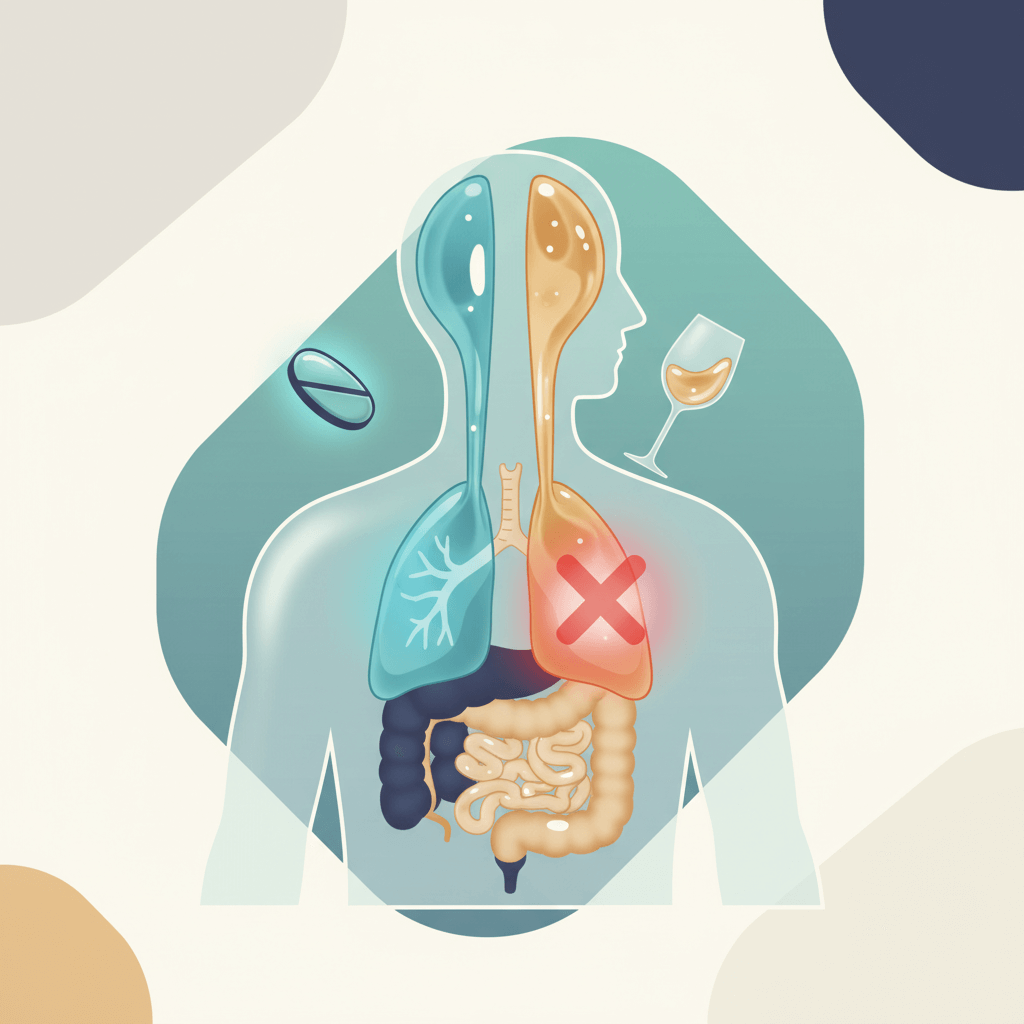The Paradox of Craving Connection While Pushing It Away
Do you deeply desire closeness with others, yet find yourself pulling away or sabotaging relationships when they start to get serious? This frustrating cycle of wanting connection while simultaneously fearing it is a common struggle. You're not alone, and there is a path toward building the healthy, intimate relationships you deserve.
Picture this scenario: You meet someone wonderful. The chemistry is undeniable, conversations flow effortlessly, and for the first time in a while, you allow yourself to imagine a future together. Then something shifts. Maybe they suggest meeting your friends, or they share something deeply personal about their past. Suddenly, you find yourself picking fights over minor issues, becoming distant, or discovering dealbreaker flaws that weren't there before.
This internal tug-of-war between longing for connection and protecting yourself from vulnerability affects millions of people. At Prescott House, we've witnessed countless individuals wrestling with this exact pattern, often alongside other behavioral challenges. The good news? Understanding this struggle is the first step toward breaking free from it.
This guide will walk you through what is often called an "intimacy disorder," exploring its signs, root causes, and most importantly, providing actionable steps and professional strategies to overcome it and cultivate meaningful connections.
What Is an Intimacy Disorder? (And What It's Not)
Before diving deeper, let's clarify what we're actually discussing. "Intimacy disorder" isn't a formal clinical diagnosis you'll find in the DSM-5. Instead, it's a descriptive term mental health professionals use to describe a significant fear of or inability to maintain close, intimate relationships.
This isn't about being introverted or preferring quiet evenings at home over crowded parties. Introversion is a personality trait about how you recharge your energy. Intimacy disorder, however, involves an active avoidance of emotional closeness even when you desperately want it.
The confusion often stems from mixing up solitude preference with intimacy avoidance. Someone with healthy intimacy skills might choose to spend Saturday night reading alone, but they can still share their deepest fears with their partner or feel comfortable receiving physical affection.
The Four Types of Intimacy People May Struggle With

Intimacy isn't just about romantic relationships or physical touch. There are actually four distinct types of intimacy, and you might struggle with one, some, or all of them:
Emotional Intimacy involves sharing feelings, vulnerabilities, and deep thoughts. This means being able to say "I'm scared about my job interview tomorrow" instead of just "I'm fine" when someone asks how you're doing.
Physical Intimacy encompasses both sexual and non-sexual touch. This includes everything from holding hands and hugging to sexual connection. Some people can handle casual physical contact but freeze up when touch becomes emotionally meaningful.
Intellectual Intimacy develops through sharing ideas, engaging in curious conversations, and having respectful debates. It's about letting someone see how your mind works, including your quirky thoughts and half-formed theories about why cats purr or whether aliens exist.
Experiential Intimacy builds bonds through shared activities and experiences. This might involve trying new restaurants together, traveling to unfamiliar places, or simply developing inside jokes that only the two of you understand.
Many people excel in one area while struggling in others. You might be the friend everyone comes to for deep conversations but panic when someone tries to hug you goodbye.
Telltale Signs: Recognizing the Fear of Intimacy in Yourself or Others
Recognizing intimacy avoidance can be tricky because it often masquerades as other things—high standards, independence, or simply "not having found the right person yet." The patterns become clearer when you look at the bigger picture of your relationship history and current behaviors.
At Prescott House, we often work with individuals who initially come in for other concerns—perhaps anxiety, depression, or behavioral addictions—only to discover that underlying intimacy fears are significantly impacting their overall well-being and recovery process.
Behavioral and Emotional Indicators
A pattern of short-term or unstable relationships is often the most obvious red flag. You might find yourself ending relationships just as they begin to deepen, or you discover that your longest relationship lasted only a few months. This isn't about being picky—it's about unconsciously sabotaging connections when they start to feel too real.
Relationship sabotage can be subtle or dramatic. Subtle sabotage might involve becoming increasingly critical of your partner's habits, suddenly noticing annoying traits you previously found endearing, or creating distance through work or social commitments. More dramatic sabotage includes picking fights over trivial issues, cheating, or simply disappearing without explanation when things get serious.
Commitment paralysis extends beyond refusing to define relationships. You might struggle to make plans more than a few weeks in advance, feel anxious when someone wants to introduce you to their family, or panic when conversations turn to future goals or dreams that might include you.
Physical touch avoidance often surprises people because it can be inconsistent. You might be comfortable with sexual intimacy but freeze up during non-sexual affection like cuddling during a movie. Or you might be fine with casual touches but feel overwhelmed when someone holds your hand with obvious emotional intent.
Emotional walls disguised as independence is perhaps the most socially acceptable form of intimacy avoidance. You pride yourself on being self-sufficient, never needing help, and handling everything alone. While independence is healthy, this becomes problematic when you can't or won't let others support you even in small ways.
The "ick factor" represents a sudden, seemingly irrational turn-off that occurs just as a relationship deepens. Yesterday, the way they laughed at their own jokes was charming; today, it's unbearable. These dramatic shifts in perception often indicate that your defensive mechanisms are activating as emotional intimacy increases.
Difficulty expressing needs and feelings shows up in various ways. You might find yourself saying "I'm fine" when you're clearly not, struggling to ask for what you want in relationships, or feeling like your emotions are too intense or inappropriate to share with others.
Persistent feelings of not being "good enough" create a painful cycle. You want connection but believe you don't deserve it, or that once someone truly knows you, they'll inevitably leave. This often leads to either people-pleasing behaviors or preemptive rejection of others.
Uncovering the Roots: Common Causes of Intimacy Issues
Understanding why intimacy feels dangerous requires looking at how your brain learned to navigate relationships and safety. These patterns typically develop early in life as adaptive responses to challenging circumstances, meaning your intimacy avoidance once served an important protective function.
The Role of Childhood and Attachment
Attachment theory provides crucial insight into how early relationships with caregivers shape our adult connection patterns. Your attachment style—formed in the first few years of life—becomes a kind of internal blueprint for how relationships work.
Secure attachment develops when caregivers are consistently responsive, emotionally available, and reliable. People with secure attachment generally find it easier to trust others, communicate needs clearly, and navigate relationship conflicts without catastrophizing.
Anxious attachment forms when caregivers are inconsistently available—sometimes wonderfully attentive, other times distracted or overwhelmed. This creates adults who crave closeness but fear abandonment, often becoming clingy or constantly seeking reassurance in relationships.
Avoidant attachment develops when caregivers are emotionally unavailable, rejecting, or dismissive of emotional needs. Children learn that expressing vulnerability leads to disappointment or hurt, so they develop strong self-reliance and emotional distance as protective mechanisms.
Disorganized attachment occurs when caregivers are simultaneously sources of comfort and fear—often in homes with abuse, addiction, or severe mental illness. This creates adults who desperately want connection but find it terrifying, leading to chaotic relationship patterns.
Childhood trauma doesn't require extreme abuse to impact intimacy. Emotional neglect, witnessing parental conflict, experiencing bullying, or early losses can all teach a developing brain that vulnerability equals danger. These experiences can create deeply held beliefs like "If I let someone close, they will hurt me" or "I am only safe when I'm in control."
Enmeshment represents the opposite extreme, where family boundaries were so blurred that individual identity became confused with family identity. Adults from enmeshed families often fear that intimate relationships will consume their sense of self, leading them to maintain rigid emotional distance to preserve their identity.
Other Contributing Factors
While childhood experiences lay the foundation, adult experiences can reinforce or challenge these early patterns. Previous romantic betrayals, particularly when they occurred during vulnerable periods, can reactivate old wounds and strengthen defensive mechanisms.
Mental health conditions like anxiety and depression can significantly complicate intimacy. Social anxiety makes the vulnerability required for intimacy feel exponentially more threatening, while depression can create beliefs about being unlovable or burdensome to others.
Cultural and family messages about relationships also play a role. Growing up hearing that "you can't trust anyone" or that "relationships always end badly" creates expectations that become self-fulfilling prophecies.
At Prescott House, we frequently see how substance use and behavioral addictions intersect with intimacy fears. Sometimes people use addictive behaviors to numb the pain of loneliness, while other times the shame around addictive behaviors creates additional barriers to authentic connection. Understanding these connections is crucial for comprehensive healing.
Fear of rejection and abandonment often drives what appears to be intimacy avoidance but is actually preemptive self-protection. If you reject others before they can reject you, or if you never fully invest in relationships, the inevitable loss won't hurt as much—or so your protective mechanisms believe.
The irony is that these protective strategies, which may have been necessary during childhood or previous difficult relationships, now prevent you from getting the very thing you most want: genuine, lasting connection with others who see and accept the real you.
Breaking Free From the Cycle
The paradox of craving intimacy while pushing it away can feel exhausting and isolating, but it does not have to define your future. By recognizing the signs, understanding where these patterns come from, and taking intentional steps toward healing, you can begin to rewrite your story. Connection is not only possible—it’s something you deserve.
At Prescott House, we know how deeply these struggles can affect every aspect of life. With the right support, tools, and guidance, it’s possible to move past old defenses and build the kind of authentic, lasting relationships that bring true fulfillment. Healing begins with courage—the courage to face vulnerability, to accept help, and to open yourself up to the closeness you’ve long desired.













